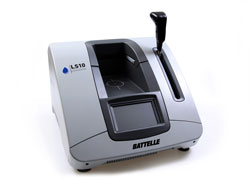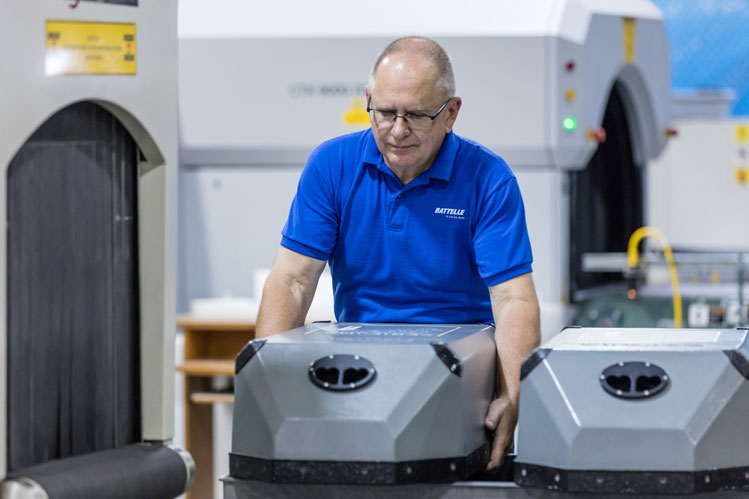Don LaMonaca, Business Line Manager, Infrastructure Security Business Line, Battelle, interviewed by Ross Falconer.
The number one priority of all airports is, of course, the safety and security of travellers. Progressive airports are investing in new, advanced technologies designed to enhance security while ensuring an efficient, streamlined passenger process.

Battelle’s LS-10 system is designed to enable passengers to safely carry liquids, aerosols, and gels through security checkpoints. It detects flammables, acids, oxidizers, explosive precursors, and explosive compounds in almost any container in under five seconds.
With advancements in imaging technology and the anticipated increased use of 3D imaging systems, Battelle has been focusing on two key areas for development. “Firstly, we developed a standardised tool called Verif-IQ that verifies the proper image quality of advanced screening systems,” explains Don LaMonaca, Business Line Manager, Infrastructure Security Business Line, Battelle. “Secondly, we developed a next-generation screener training platform called ProDetect for improving 3D image interpretation.”
As the Transportation Security Administration’s primary test and evaluation service provider, Battelle views all airports as its customers. “We are on the front lines ensuring that security technology is functioning properly prior to being placed into operation,” LaMonaca adds. “This may be standalone technologies, such as whole-body imaging systems at checkpoints, or complex, fully integrated, inline computed tomography systems for checked baggage screening.”
Battelle also supports the evaluation of new technologies that are designed to improve security, operational efficiency, and the overall customer experience, such as Automated Screening Lanes.
“One of Battelle’s objectives is to promote harmonisation of security standards and best practices across the globe, and Europe is a very important market for us with respect to this objective,” says LaMonaca. “For example, we are working with the European Civil Aviation Conference (ECAC), as well as country-specific regulatory bodies across Europe, to promote standards for image quality testing of advanced imaging systems.”
Implementing an open architecture framework
Extensive laboratory testing is necessary to determine whether a given screening system meets performance requirements, such as explosives detection performance. Once a system satisfies the required performance thresholds, the configuration and performance of that system can be baselined. “Entities that purchase screening systems, including airports, should verify the configuration and performance of the systems they are buying against established baselines,” LaMonaca notes.
Two drivers, among others, will play a key role in how security screening technology evolves in the future. First, the development and implementation of an open architecture framework for security technology inter-operability will greatly impact the future of screening technology. “Inter-operability will allow a step-function improvement in security capabilities by opening the market to greater innovation and allowing greater implementation of risk-based security strategies,” says LaMonaca. “Second, and especially as technology inter-operability increases, the ability to leverage big data will greatly enhance security capabilities in areas such as algorithm refinement, machine learning, operations optimisation, and again aiding the implementation of risk-based security strategies.”

Don LaMonaca, Business Line Manager, Infrastructure Security Business Line, Battelle: “We are working with the European Civil Aviation Conference (ECAC), as well as country-specific regulatory bodies across Europe, to promote standards for image quality testing of advanced imaging systems.”
Many new innovations are rapidly emerging onto the scene, or will be soon, such as Automated Screening Lanes and computed tomography (CT) technologies for checkpoints. “The pace of innovation and new technology adoption will accelerate under an open architecture framework, and the development and implementation of an open architecture framework for aviation security technology should be a high priority,” LaMonaca adds.







